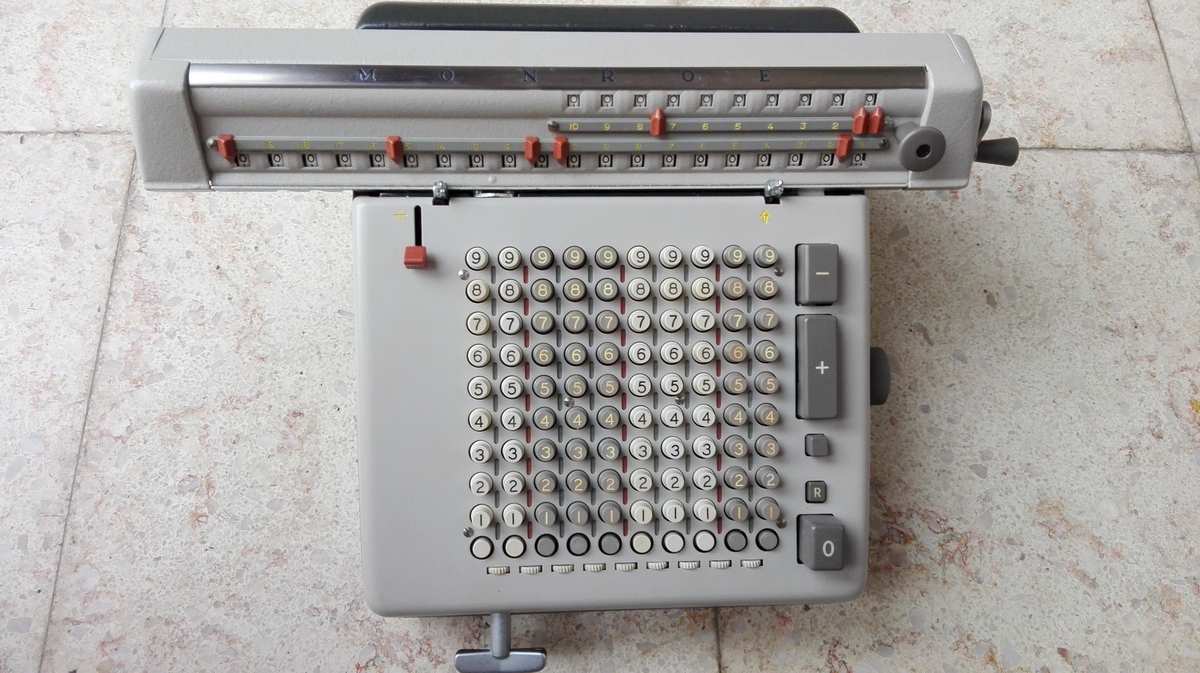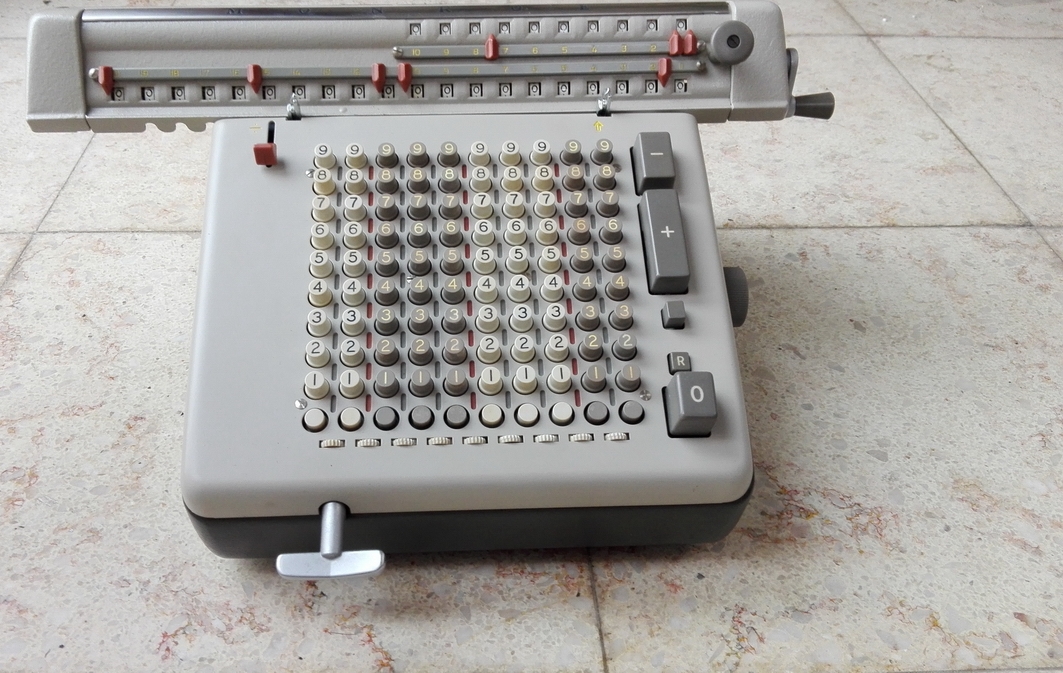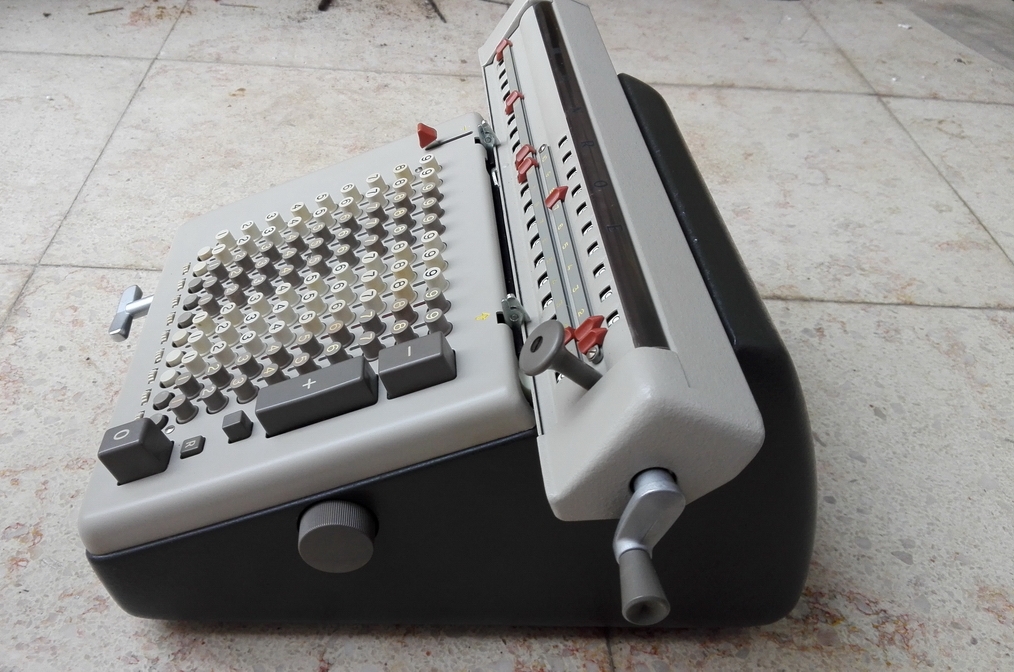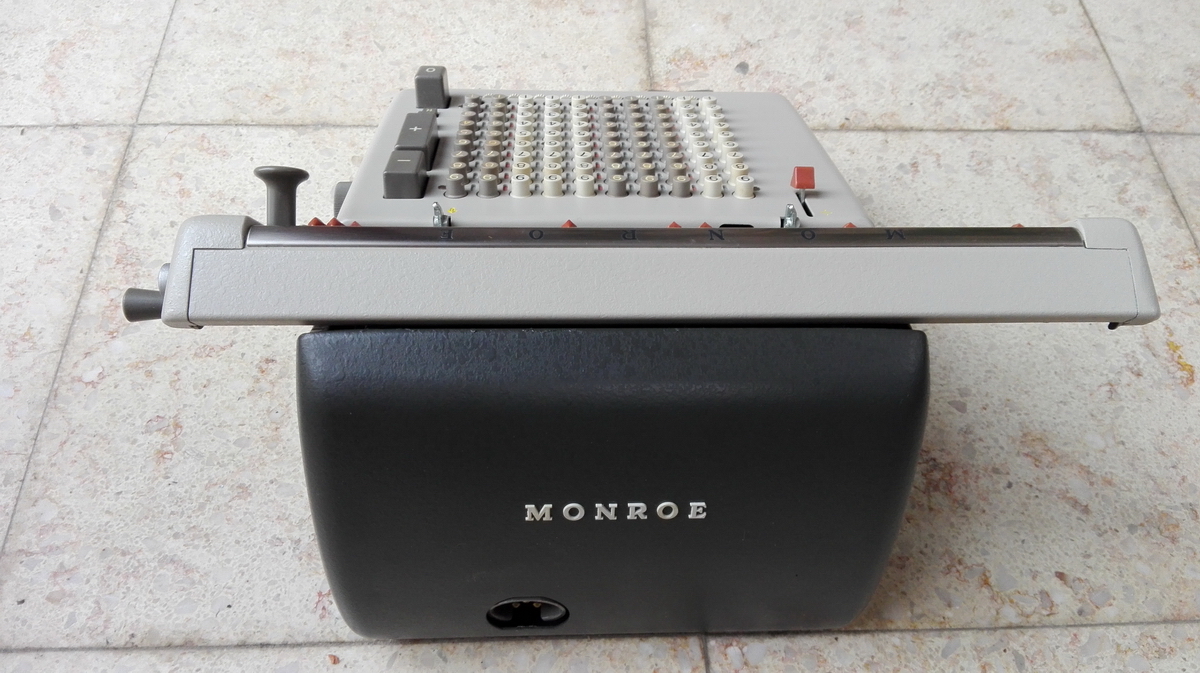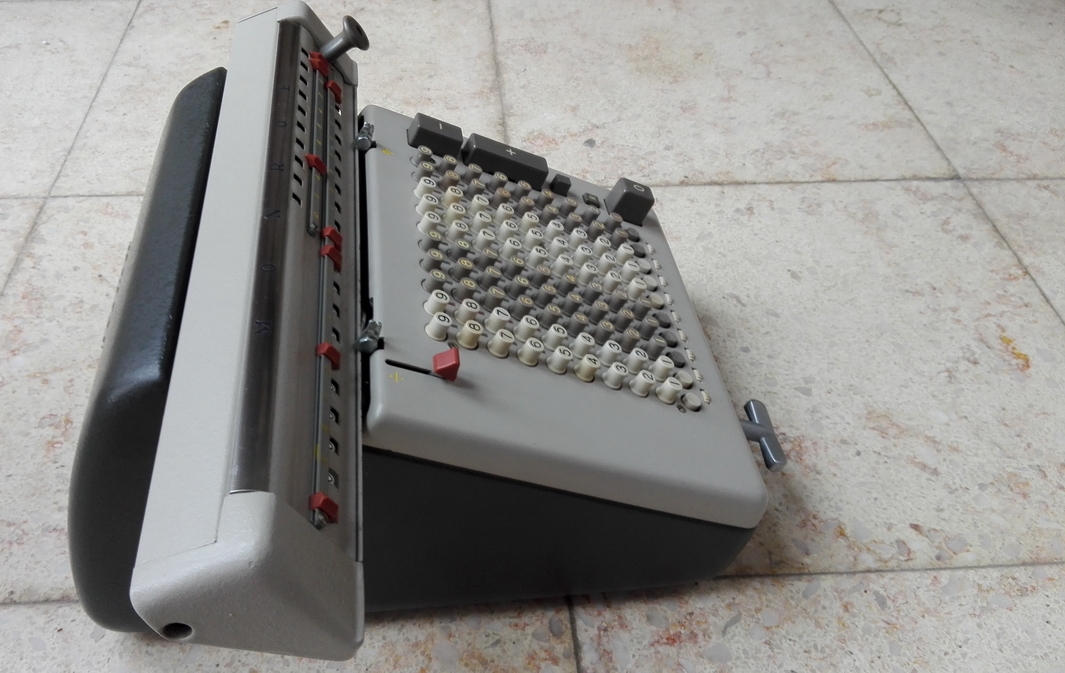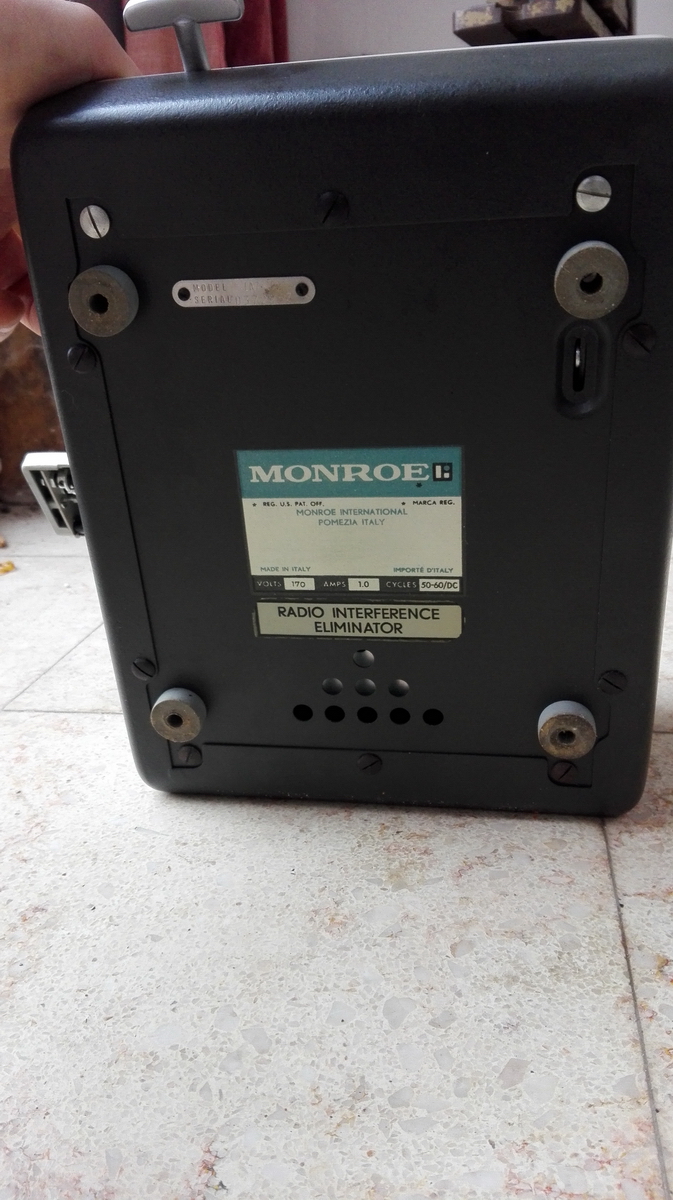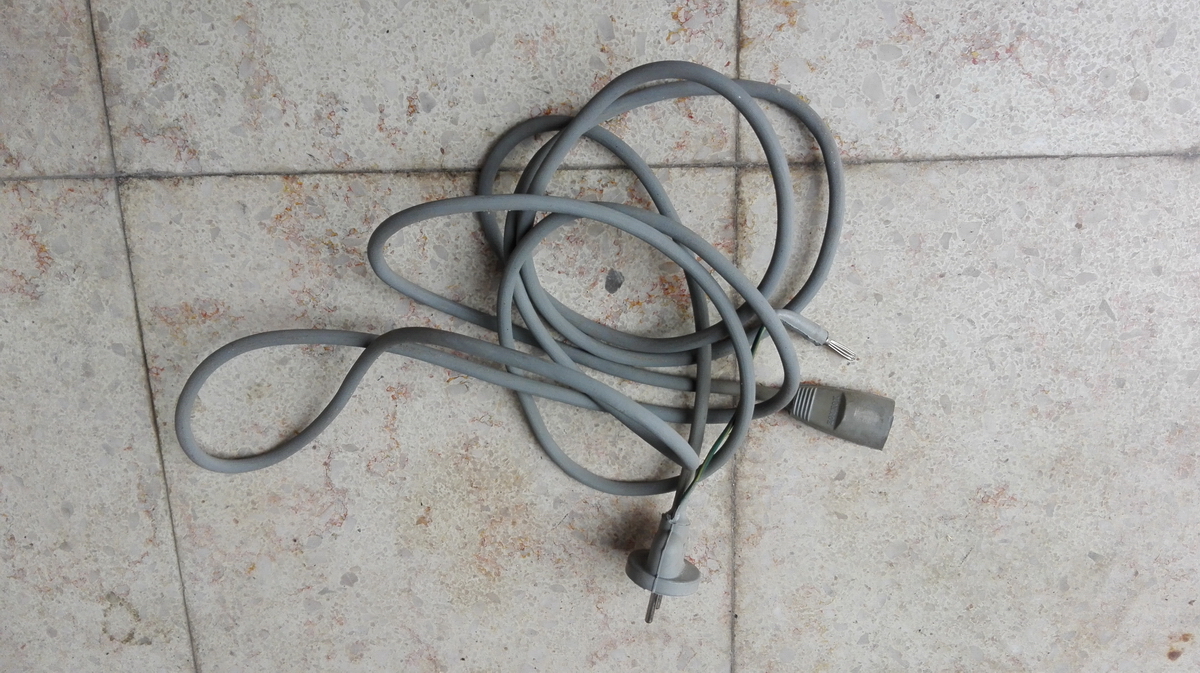Monroe LA7-200
This is a very special calculator. If you were a young Monroe distributor in France at the end of the 1960s, and you ended up with a large stock of Monroe LA7-200 machines, made in Italy for sale in France, chances were real that they would never sell. And so at the beginning of the 1970s, you knew deep inside that they would no longer sell - ever. So what do you do with 40 brand new Monroe calculators? You stockpile them in your garage, of course!Fast forward 50 years, when you are retired after a successful career in which the distributorship for Monroe was but the beginning, and now you decide to move and downsize, selling off the crates in your garage. After seeing my website, the owner generously offered me one of them, brand new in its unopened box. Below you will find the video in which I first open the box:
Some pictures of the box:
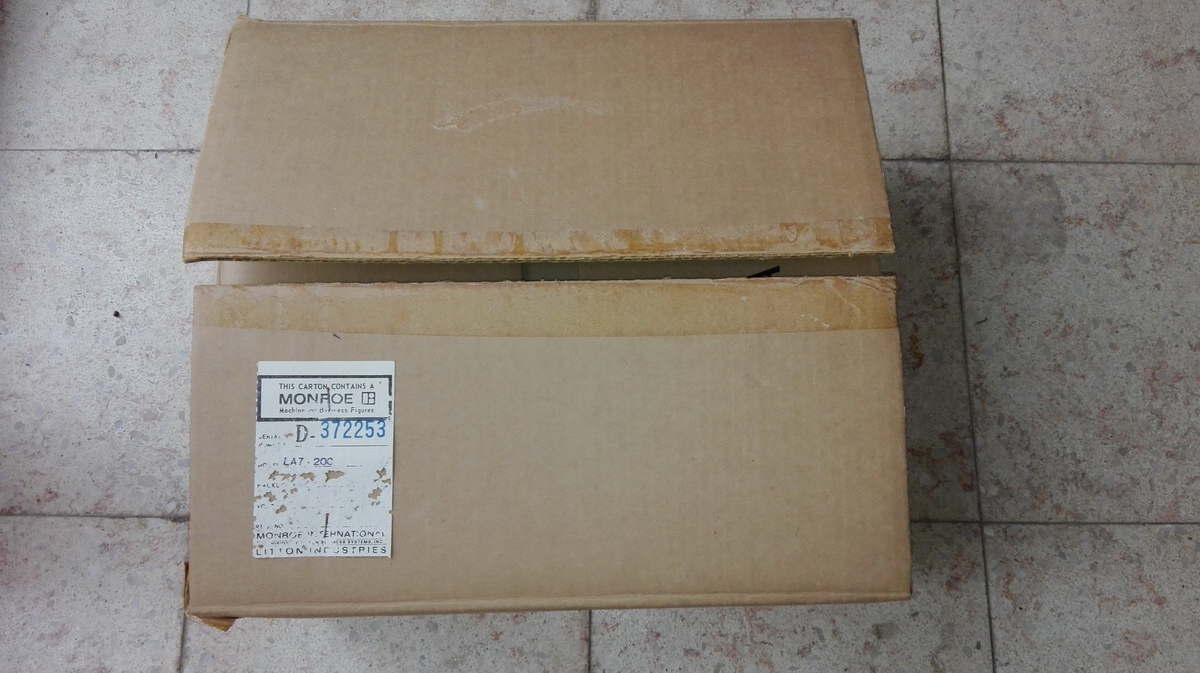
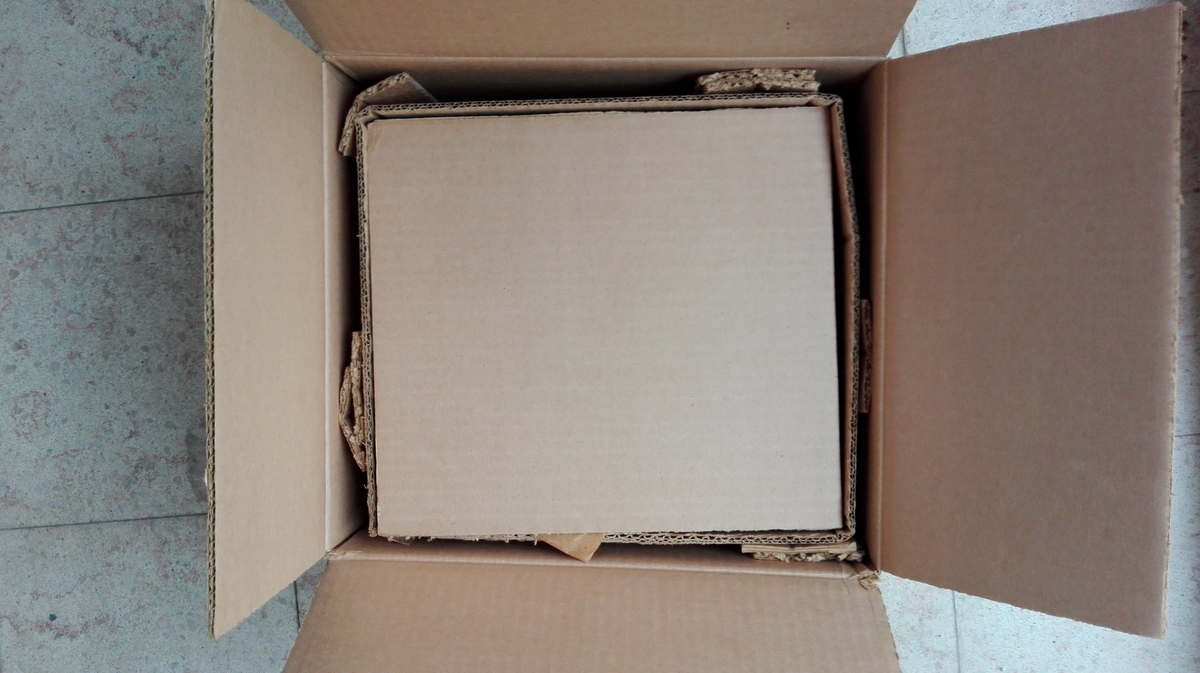
So what's in there ? First of all, the machine screwed to a piece of hardboard, wrapped in brown paper and taped shut with a piece of foam on top. Then the carriage, also wrapped in brown paper, with a rubber block protecting the crank. A packing slip, with the serial number of the machine, and the assembly and quality control card. Then a manual, in french, of course, a plastic machine cover, a power cord, and a brown paper baggy which contains the hand crank to replace the round knob at the side of the machine as well as four screws to replace the long screws the machine is screwed to the piece of hardboard with.
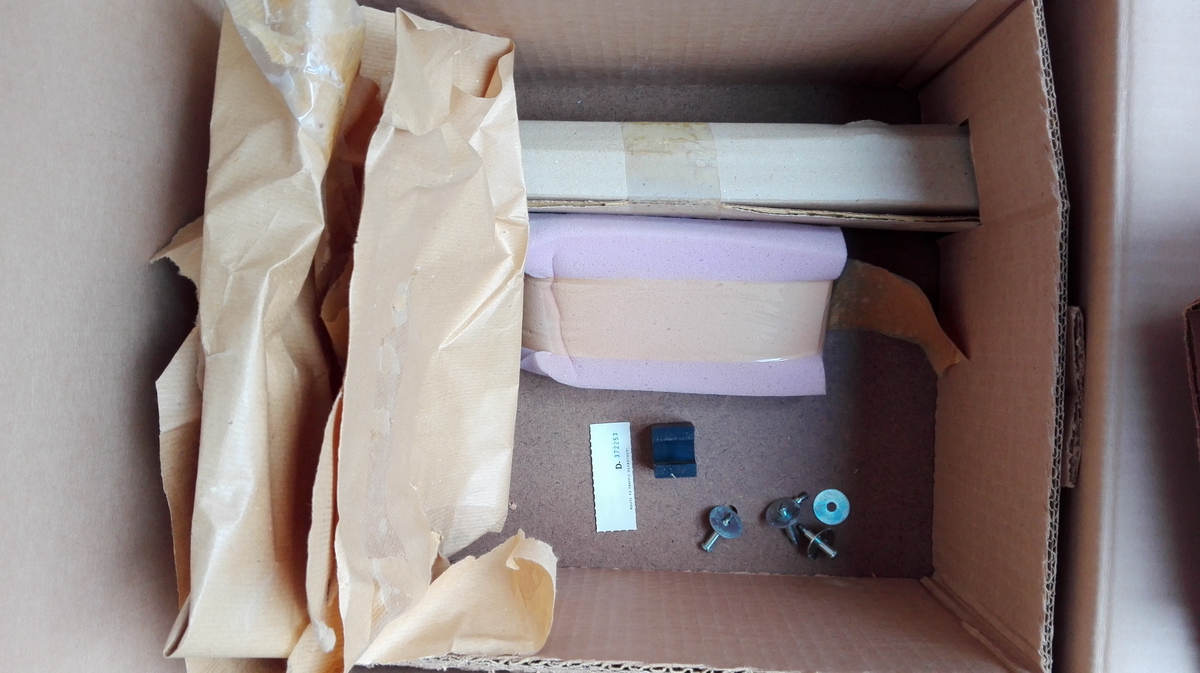
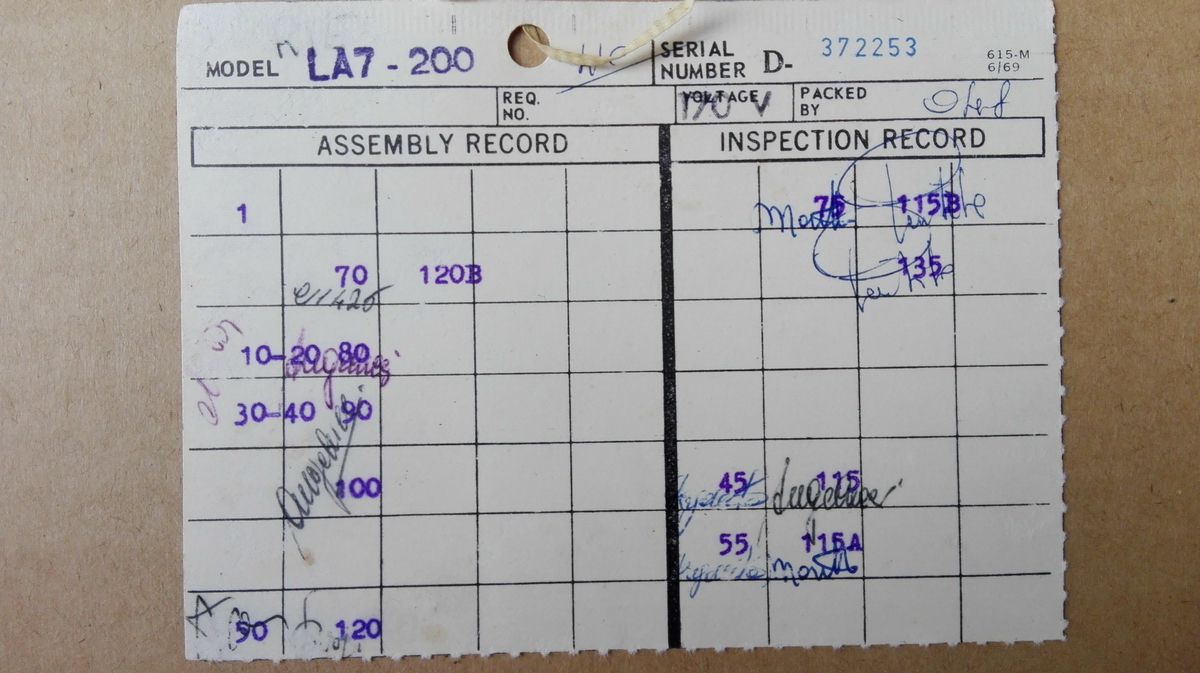
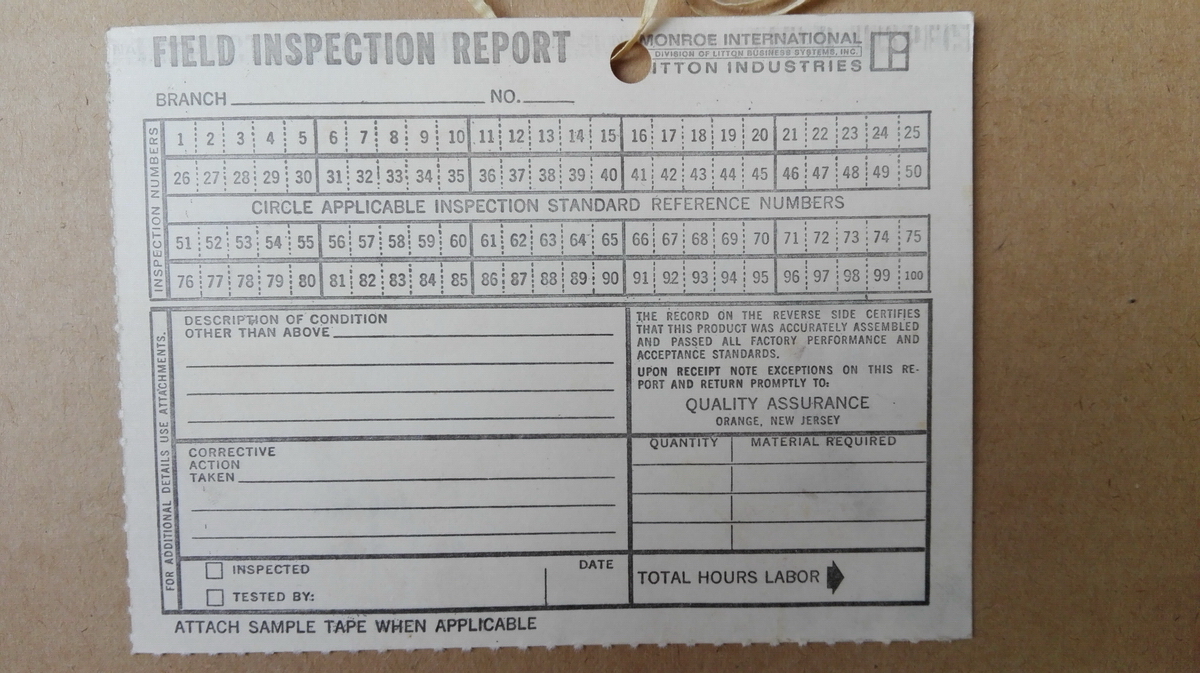
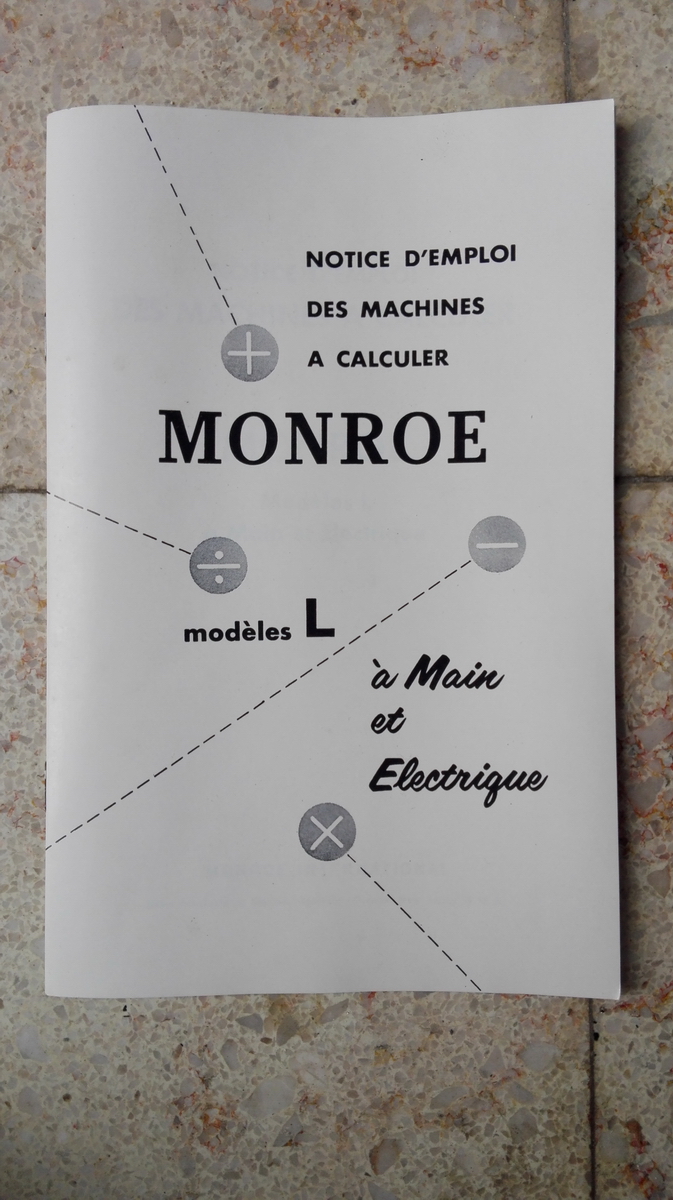
And these are the screws for the feet which need to be replaced:
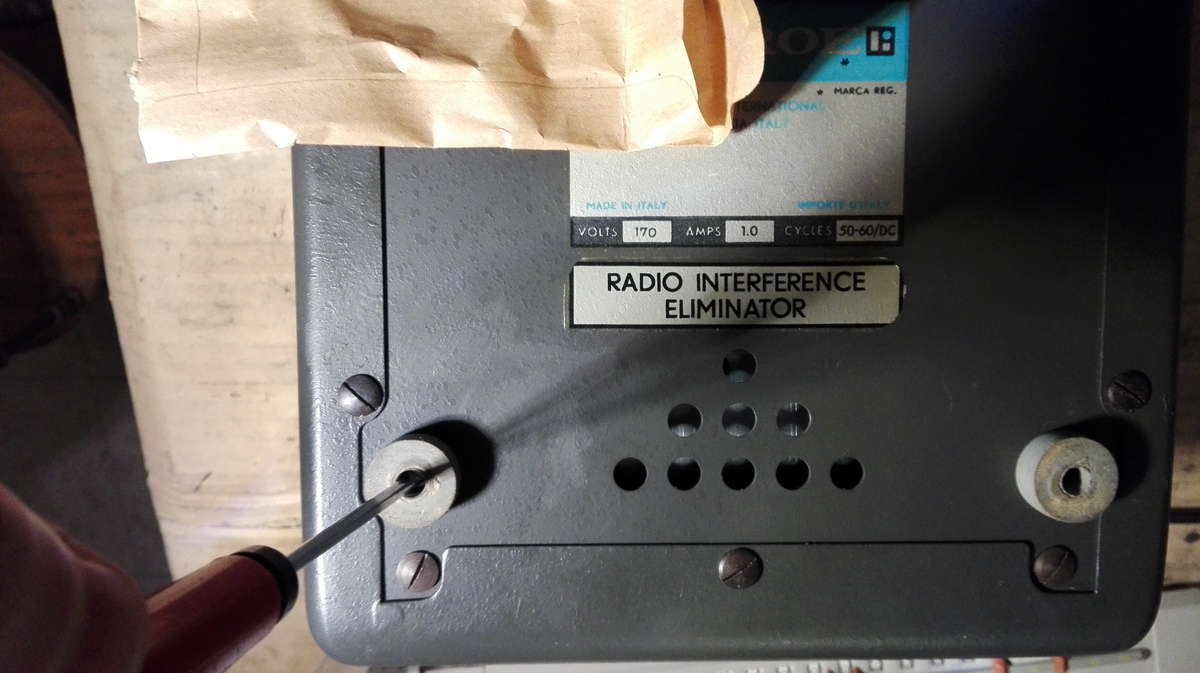
The carriage needs simply to be placed under the holddown clips at the front, and the clip on the bar at the rear must be undone, the bar retracted, the carriage put in place, and then the process needs to be reversed so the bar and clip go back where they came from. Prior to that, it is advisable to lightly lubricate the mechanism with a light oil, in order to soften up the 50 year old grease in the mechanism. I quickly discovered that the tens' carry didn't work properly as long as it wasn't lubricated.
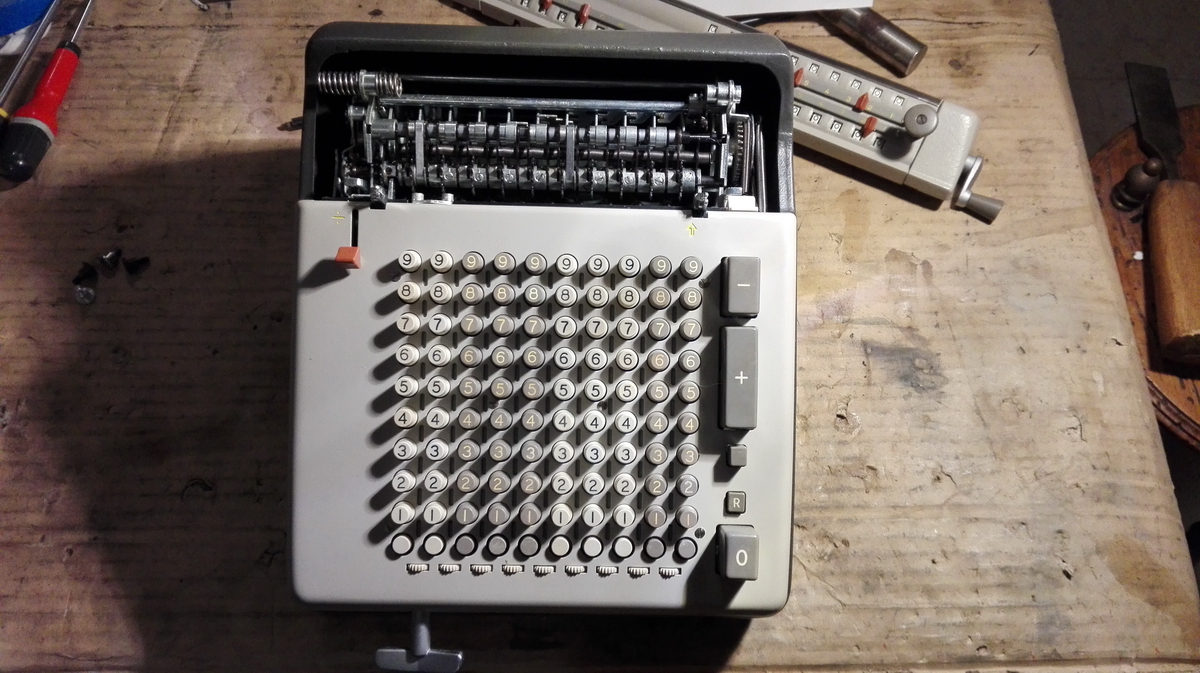
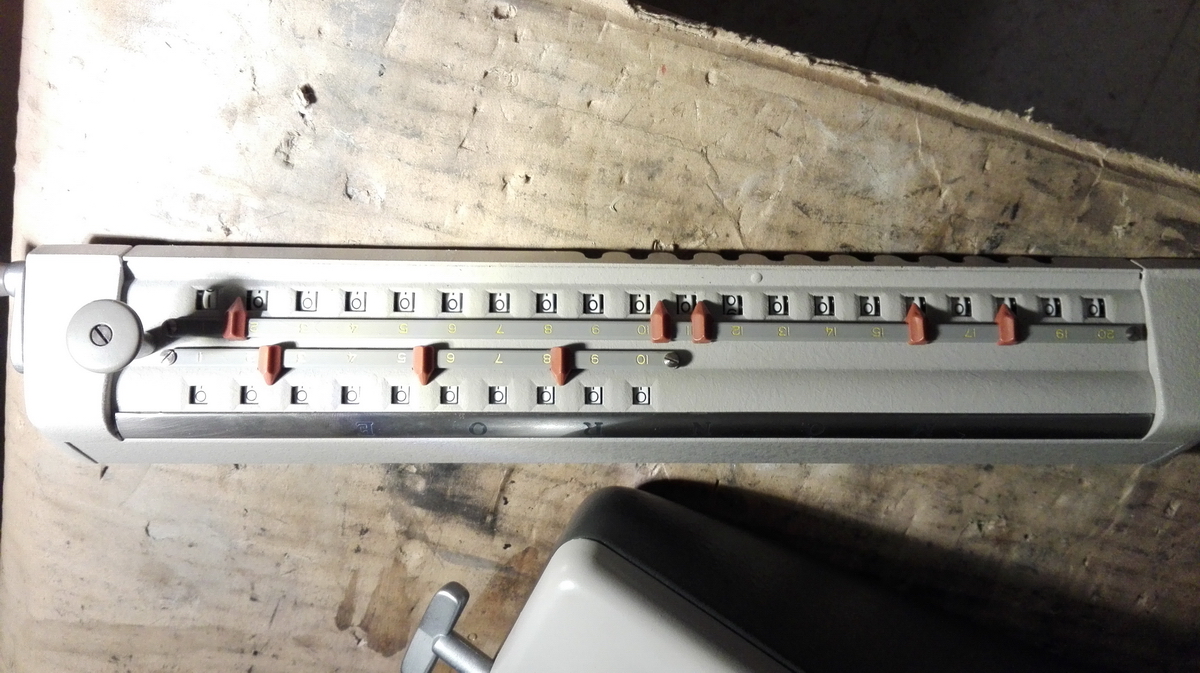
The carriage was another problem. A spring fell out when I unwrapped it, and then a clip came out from between the unidirectional gear clutches for the clearing handle. The result of that was that the counter register wouldn't clear, and it took me a while to find out where the mystery clip came from. But in the end all was right.
The next hurdle was the motor. The bottom of the machine says it is suitable for 170V 50Hz, 60Hz and DC. I think that stems from the peak voltage of 110V AC, and with a transformer I could verify that the machine would run on 110V AC - the motor, by the way, was made in the Netherlands.
The hand crank is another interesting story. When you insert the manual crank into the machine with the power cord hooked up, the motor clutch is disengaged and the motor starts running, as a warning signal not to do that. Clever! Interestingly, the machine does not sport electric carriage movement, except during automatic division, which is a very weird choice of functionality - it would not have been difficult to add two buttons.
Division was another pickle. The machine's division automatic uses the normal algorithm of subtracting until it detects an underrun, doing one cycle of addition and shifting the carriage to the left. Before lubrication, it would sometimes do two carriage movements instead of one, and since there is no tens carry in the revolution counter, that completely screws up the result. Another issue that would occur is that sometimes the machine wouldn't properly reverse direction after an addition cycle, and keep adding instead, which means the division gets stuck in an endless loop. Nothing bad though, a bit of oil and everything was hunky-dory.
So here's the insides of a very clean Monroe LA7-200
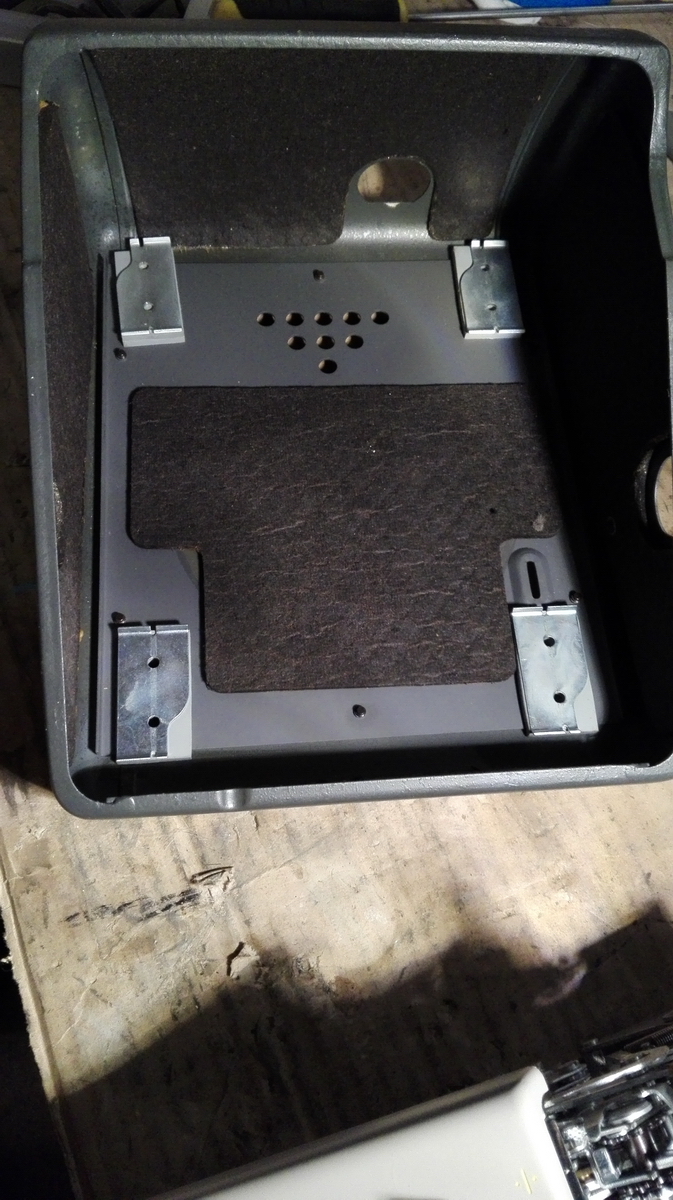
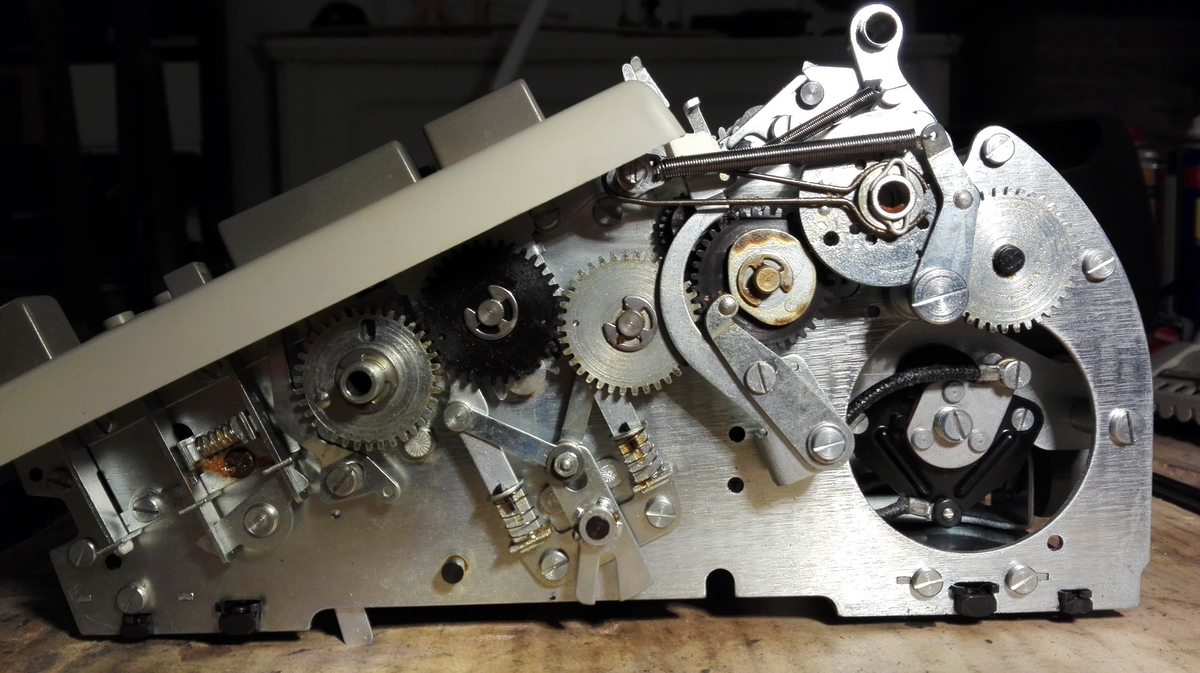
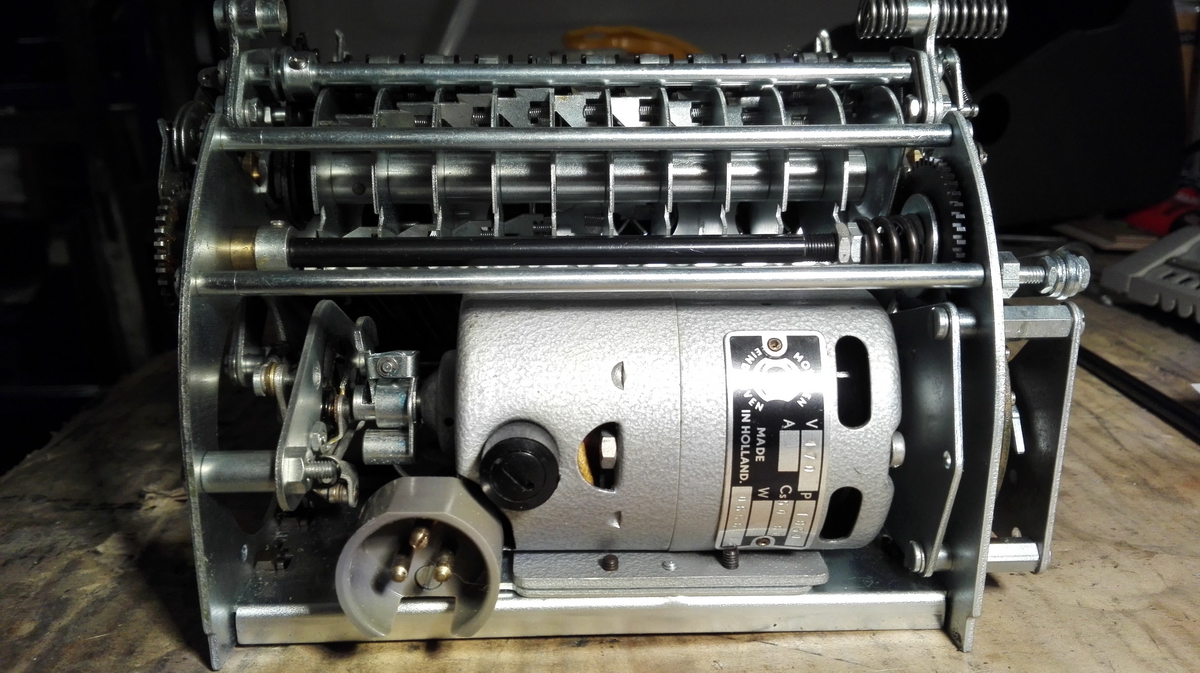
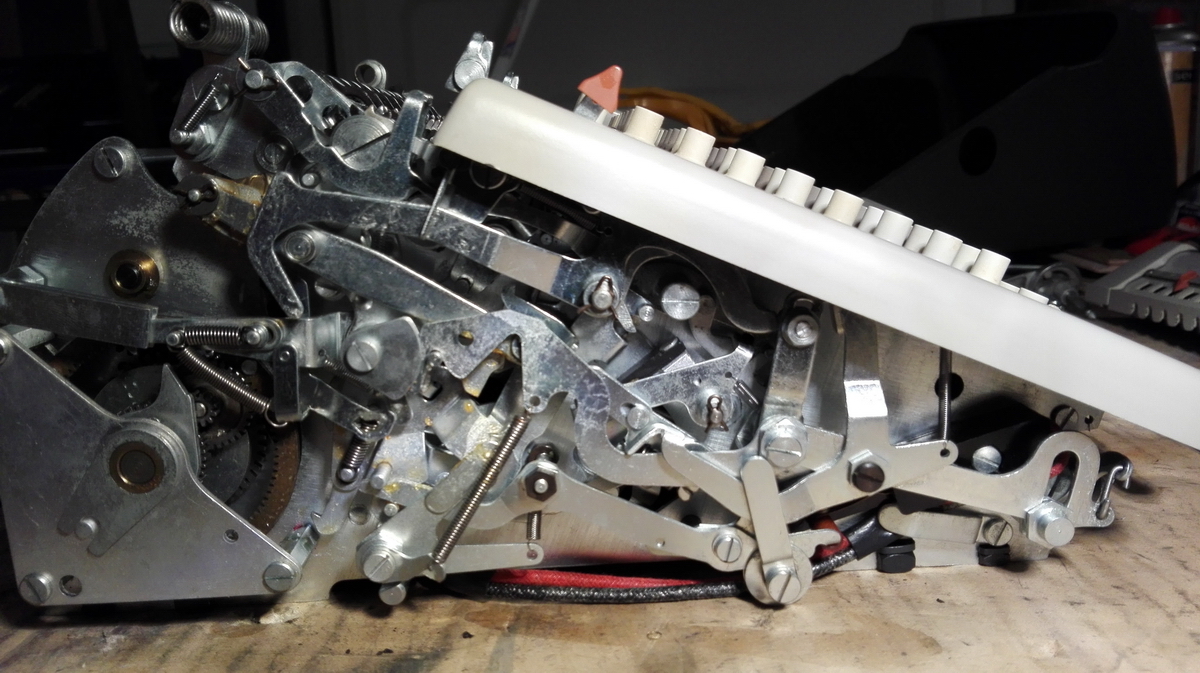
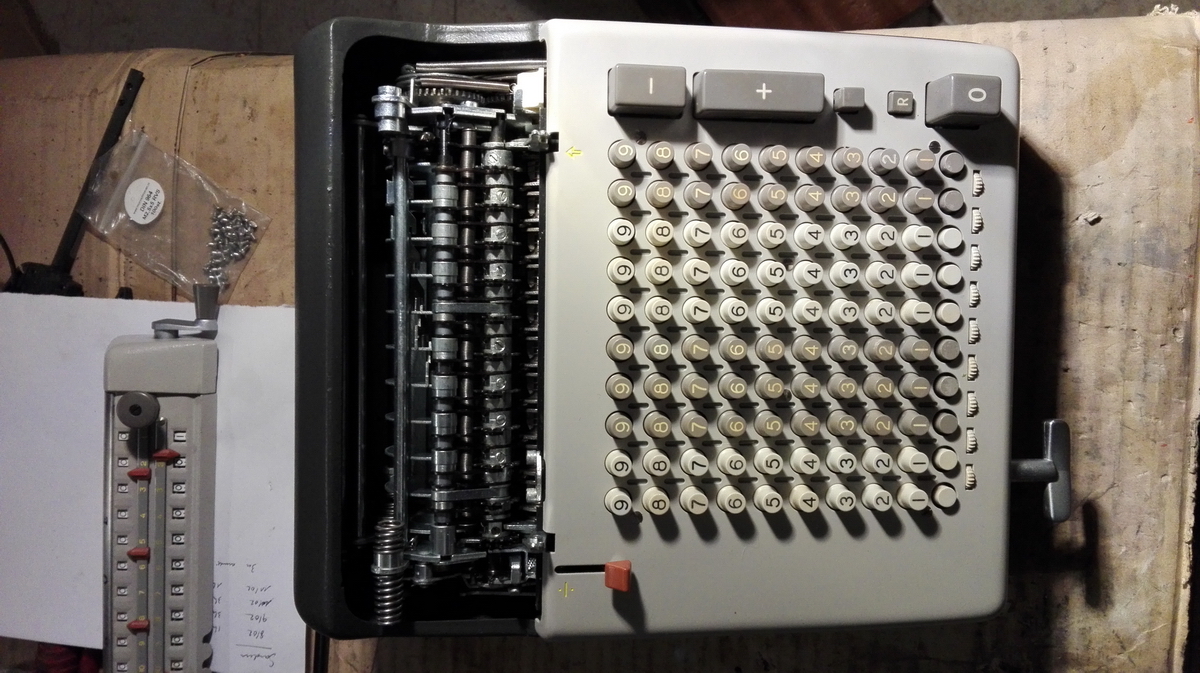
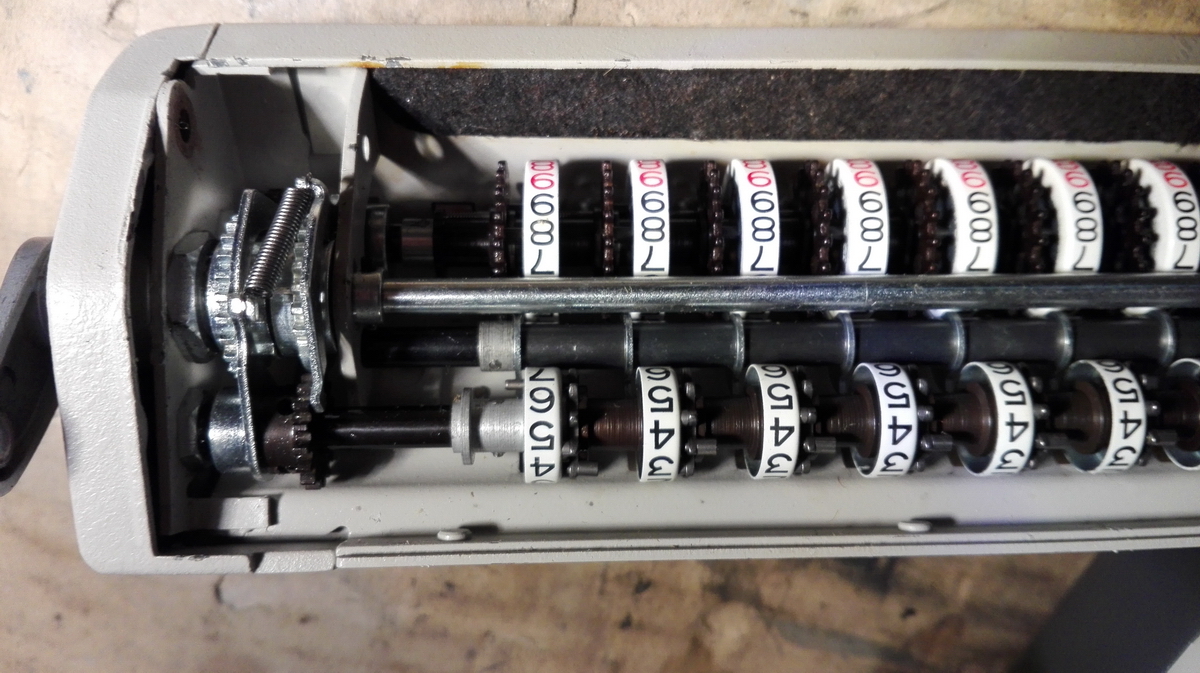
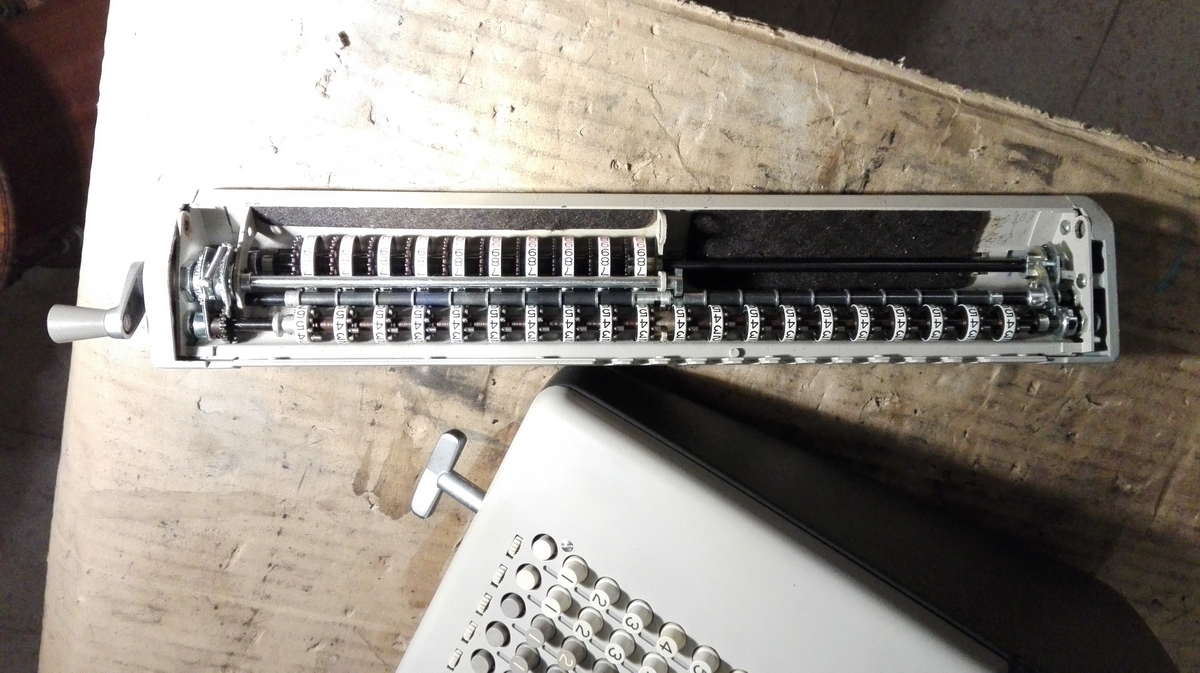
And these are the glamour pictures of the machine.
